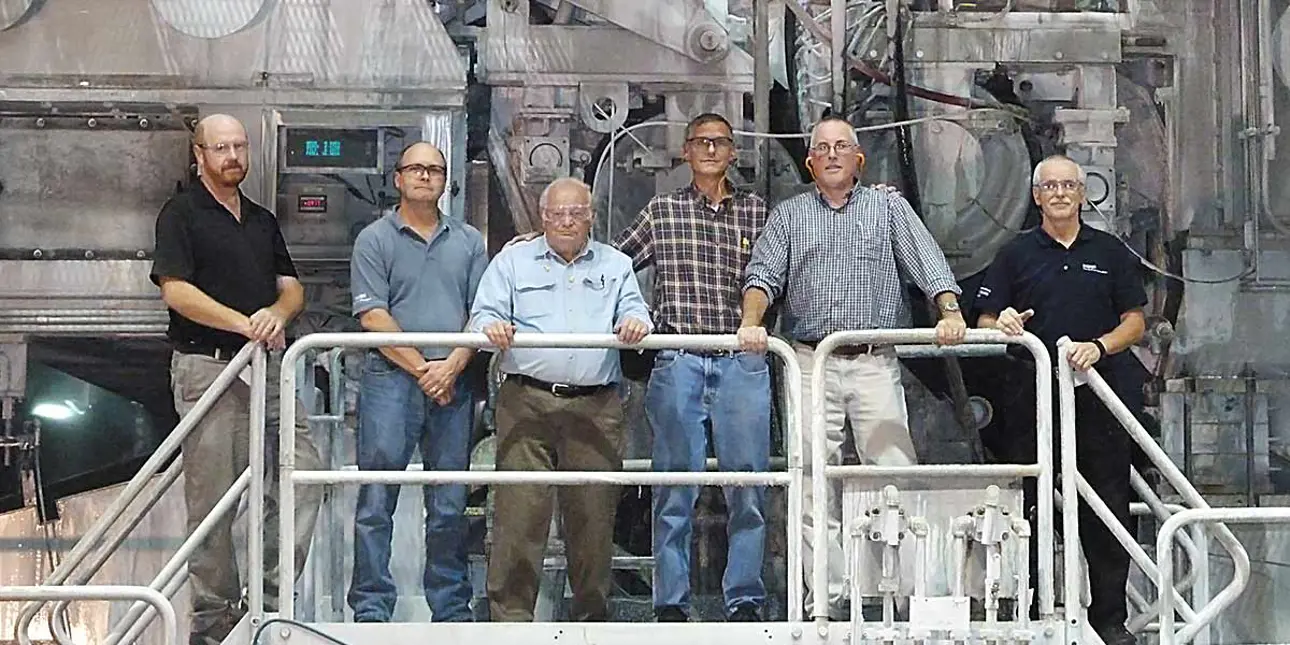Sappi Somerset Operations PM 3 former rebuild with OptiFormer Gap shoe and blade technology

Satisfied Sappi representatives in front of the PM 3 former. From the left, Frank Magoon, Rod Guillow, Dick Forster, Greg Hale, Dave Moore and Camille Chamberland.
No more two-sidedness, better formation, and significant cost savings
In October 2012, Sappi Fine Paper North America successfully started up PM 3 at its Somerset Mill in Skowhegan, Maine. The objective was to upgrade the existing original Beloit BelBaie III type former to an OptiFormer Gap former with shoe and blade technology.
"The formation improvement has yielded additional cost savings exceeding the project goal targets. The improved quality level has improved the mill’s flexibility to move higher quality grades to PM 3 that was not possible before the former upgrade.” - Sappi Somerset PM 3
Excellent rebuild start-up curve
The targets for the rebuild project were to improve the formation and reduce filler two-sidedness, which would reduce the use of expensive wet end and coating materials. Within a few weeks of optimization and fine-tuning, it was clear that PM 3 was well on the way to achieving the targets set. “The formation improvement and main project targets for cost savings were achieved earlier than planned,” the customer comments.
Valmet’s unique gap forming technology, OptiFormer Gap, utilizes shoe and blade technology to gain superior paper quality. The formation has beaten all other references. Also, the results from Sappi’s PM 3 demonstrate the excellent formation levels that OptiFormer Gap can provide.
Adjustability and cleanliness at a new level for improved forming section runnability
A forming section with shoe and blade technology can be operated with a variety of grades without having to readjust the forming parameters. This technology ensures excellent runnability through improved cleanliness in the gap area. “The new shoe blade former is very forgiving compared to the old BelBaie former, which was very sensitive to changes in jet landing. Adjustments in speed or headbox settings can now be done without the risk of causing a sheet break. The addition of Valmet Blow Cleaner fabric cleaning technology as part of the former rebuild has also made significant improvements in fabric cleanliness and dryness of the fabric return run. This has reduced several known causes of forming defects and breaks,” the customer comments.
Fast payback of forming section rebuild
For Sappi, one of the main reasons for the rebuild of PM 3 was to reduce mottle two-sidedness so that the mill could apply lower cost wet end and coating materials. The project’s return on investment was based on reduced use of expensive raw materials. Only a few weeks after the start-up, the mill was well on the way to achieving the anticipated ROI by reduced raw material costs.

This article is based on interviews with David Moore and Gregory Hale. Moore is working as Technical Specialist and Hale as Projects Manager of Sappi Fine Paper.
